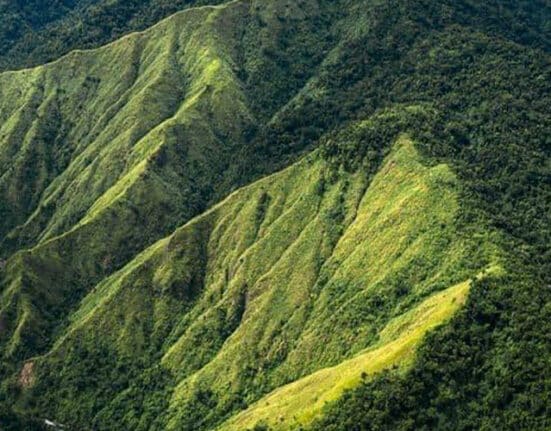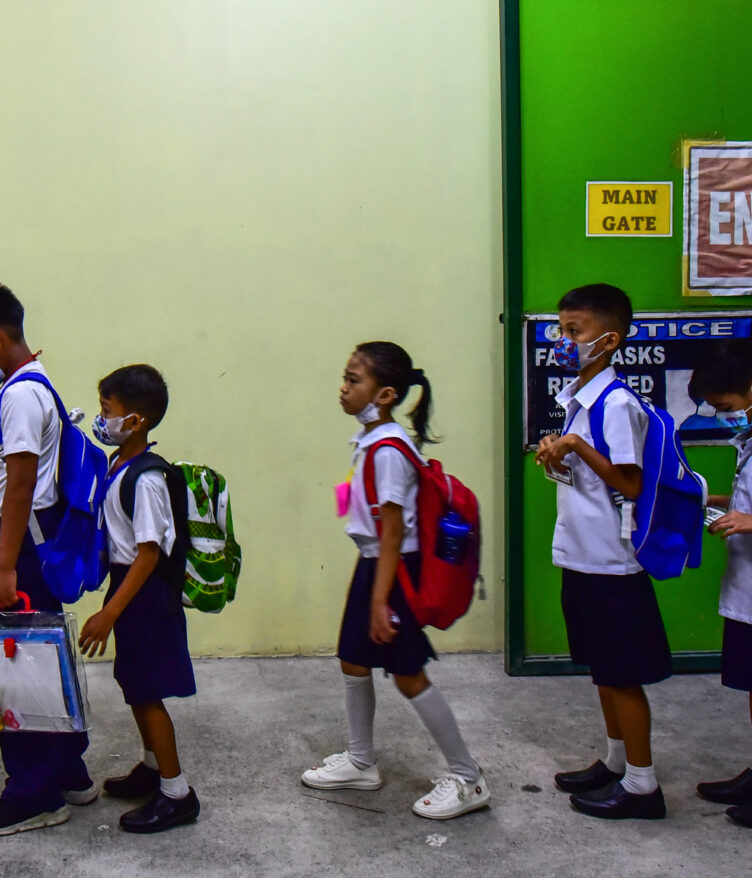IN RECENT weeks, the Philippines has been in a state of instability after a series of typhoons wrecked havoc on several Northern Luzon regions.
Kristine, Leon, Marce, Nika, Ofel, and Pepito were all typhoons that hit the country within a month of each other.
Despite the devastation it caused in numerous parts of the country, there is one stunning feature that mitigated the effects on the lives of Filipinos: the Sierra Madre mountain range, known as Luzon’s “backbone”.
The Mother of Mountains
Sierra Madre is the country’s longest mountain range. It runs approximately 500 kilometers from the province of Cagayan to the province of Quezon, constituting a north-south barrier in eastern Luzon.
The Philippines, located in the Pacific Ocean’s typhoon belt, contends with the majority of tropical storms and typhoons that originate in the western Pacific and move toward the archipelagic country each year.
Sierra Madre is a prominent geographical feature that influences weather patterns before typhoons from the Pacific Ocean reach northern Luzon.
“Nakakatulong ‘yan. Isa pang factor sa pag hina niya, nasa lupa na siya, ‘yung moisture na nae-enhance ng bagyong si Pepito unti-unting nababawasan kung ikukumpara natin habang nasa dagat siya,” said PAGASA officer-in-charge Juanito Galang to a media.
Safeguarding the Land
Typhoons, which commonly hit the Philippines, can bring severe winds, torrential rains, and flooding, but the Sierra Madre acts as a natural buffer, mitigating these effects and protecting towns.
When these storms reach the eastern side of Luzon, they frequently strike the Sierra Madre first, which contributes significantly to their weakening, demonstrating the vital role it plays in minimizing the impact of typhoons.
A classic example is Typhoon Agaton (2021), which made landfall in Eastern Samar and crossed the Sierra Madre, severely weakening its winds and rains before hitting northern Luzon.
This form of protection is especially important in areas like the Cagayan Valley, which would be exposed to the full destructive power of Pacific storms if the Sierra Madre did not exist.
Threats over the Sierra Madre
The construction of the Kaliwa Dam is part of the government’s efforts to address water shortages in Metro Manila, but it is one of the projects that poses a significant threat to Sierra Madre preservation.
On November 4, around 250 people from various sectors and regions attended a National Sectoral Consultation against the Kaliwa Dam project at UP Diliman’s Tandang Sora Hall.
“The Kaliwa Dam is a national project intended to address the impending water crisis in the country,” said Conrado Vargas, convenor of an organizing group Alyansa ng mga Mamamayan Laban sa Mapaniil na Dam or ALMA! DAM during the consultation.
“However, it requires careful consideration to ensure that it provides a sustainable solution and that the negative effects on the environment, socio-cultural aspects, economy, and health are outweighed by its benefits.”
This project will surely affect the Dumagat-Remontado indigenous peoples (IPs), the towns of Infanta, Real, and General Nakar in Quezon Province, as well as the towns of Tanay, Morong, Baras, and Teresa in Rizal.
Protect Sierra Madre
A project like this has the potential to harm biodiversity as well as the livelihoods of forest-dependent indigenous peoples and local communities.
It would also increase the risk of landslides and flooding in low-lying towns, and Metro Manila will render populations more vulnerable to climate change consequences.
It has experienced ongoing criticism for its permanent effects on the life of indigenous Dumagat-Remontado communities and the Sierra Madre Mountain Range, which is regarded as the “backbone of Luzon” because of its ecological value and role in disaster resilience.
In an interview with republicasia, Ian Capati expressed his desire to safeguard Sierra Madre from a destructive project, just as it had protected his life and the lives of other Nueva Ecija residents.
“Sierra Madre is more than just a mountain range, it’s a natural shield that protects us from the worst impacts of typhoons. Living near it, I’ve seen how it reduces the intensity of storms, giving us a chance against nature’s fury,” Capati said.
“But beyond that, it’s home to countless species and provides essential resources like clean water and air.”
“If we allow human activities to destroy it, we’re not just losing a natural barrier, we’re endangering our livelihoods and our future. Protecting Sierra Madre is about safeguarding life itself, for us and for the generations to come,” he added.
We need to step in
For Capati, Sierra Madre may be a major reason why lives in Luzon are saved during deadly storms, but Filipinos must not rely only on the mountain range’s protective capabilities.
“Sadly, no, we can’t rely solely on Sierra Madre, even though it plays an important role. It’s a natural defense, but it’s not invincible,” the 23-year-old news analyst went on to say.
“The increasing number and severity of storms and the damage caused by human activities mean that it can only do so much. If we don’t practice conservation, we risk overburdening this natural protector to the point where it can no longer help us.”
Furthermore, the 23-year-old insists that Gen Zs may take action by directly participating in their communities. Volunteering with local environmental organizations that focus on reforestation and conservation efforts.
“Gen Zs can also organize educational campaigns in schools, barangays, or workplaces and can also help spread awareness about its importance in a personal and engaging way,” he said.
“Another impactful way is advocating for better environmental policies. Meaning collaborating with local officials to push for stricter laws against illegal logging or mining, or participating in petitions that demand government action to protect Sierra Madre.”
“By becoming active and concerned citizens and showing up in government offices where decisions are made, we can ensure that the preservation of Sierra Madre remains a top priority,” Capati added.
By prioritizing the conservation of the Sierra Madre’s ecosystems, northern Luzon residents can continue to rely on this natural fortress for protection against future typhoons.
Not only do the mountains protect the region, but so do healthy forests, biodiversity, and sustainable practices, all of which must be nourished and sustained.
The role of Sierra Madre in preserving northern Luzon demonstrates the necessity of natural infrastructure and appropriate safeguarding to minimize the consequences of climate change and ensure the Filipino people’s long-term safety.
How useful was this post?
Click on a star to rate it!
Average rating 0 / 5. Vote count: 0
No votes so far! Be the first to rate this post.
We are sorry that this post was not useful for you!
Let us improve this post!
Tell us how we can improve this post?







